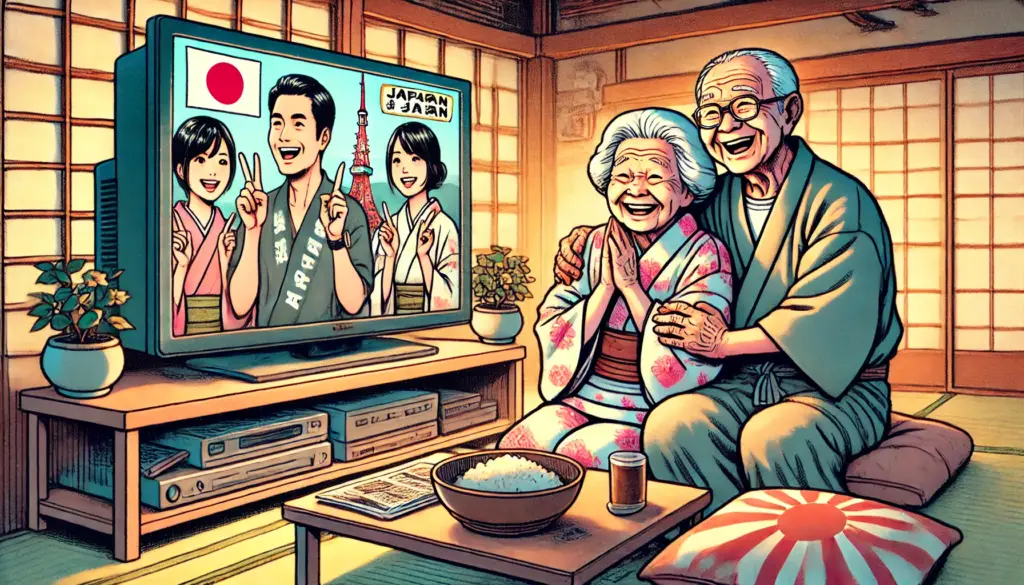
If you have spent any time on Japanese television or YouTube in recent years, you’ve probably noticed a familiar trend: programs and videos that showcase foreigners praising Japan. From interviews on Tokyo’s streets to long-form vlogs about life in Japan, the content often follows a similar script—Japan is clean, safe, convenient, and endlessly fascinating. This style of “Japan-praising” content has become so dominant that many people now wonder: why does it keep multiplying, and who exactly is watching it?
In this article, we will explore the rise of this trend, the audience behind it, and the deeper social factors fueling its demand.
The Evolution of “Japan-Praising” Content
In the 1980s, Japanese TV occasionally featured foreigners to showcase how outsiders viewed Japan. These were usually novelty segments designed to highlight Japan’s rapid modernization and internationalization.
By the 2000s, this had evolved into a more formulaic entertainment style. Variety shows invited foreigners—often called gaikokujin talents—to react with amazement to Japanese food, trains, technology, or hospitality.
Fast-forward to the YouTube era, and the phenomenon exploded. Channels run by foreign creators living in Japan began producing content tailored not only for Japanese viewers but also for international audiences fascinated by Japanese culture. Today, platforms are saturated with videos titled along the lines of:
- “Foreigners React to Japanese Convenience Stores”
- “What Surprises Me Living in Japan”
- “Why Japan Is the Safest Country in the World”
The pattern is consistent: Japan is framed as unique, special, and worthy of admiration.
Who Watches This Content?
The answer is more layered than it first appears.
1. Japanese Viewers Seeking Validation
A large share of the audience is Japanese people themselves. Watching foreigners admire Japan offers a form of cultural validation, reinforcing a national sense of pride. In a society where modesty is valued, hearing others openly praise Japan allows viewers to enjoy national pride indirectly.
2. Foreign Residents in Japan
Another group is foreigners already living in Japan. They consume these videos partly for relatability—seeing their own daily challenges and discoveries reflected through others—and partly to share with friends back home.
3. Global Japan Enthusiasts
Perhaps the most rapidly growing segment is overseas viewers. Anime fans, travelers, and students interested in Japanese culture watch these videos as a way to get closer to a dream version of Japan. For many, this content is a gateway to eventually visiting, studying, or even working in Japan.
Why Demand Keeps Rising
Several social and cultural factors explain why this trend isn’t slowing down.
1. National Pride in a Globalized Era
Japan has faced economic stagnation and demographic decline, leading to an undercurrent of uncertainty about the future. In this context, hearing outsiders admire Japan helps strengthen morale and offers reassurance that Japan still holds global appeal.
2. Tourism Boom and Global Curiosity
Before the pandemic, inbound tourism to Japan reached record levels. Even during travel restrictions, interest in Japan never faded. As borders reopened, the curiosity only intensified. Content creators tapped into this by producing videos showing exactly what foreign tourists love about Japan.
3. The Algorithm Effect
On YouTube, positive and repetitive content often performs better than critical perspectives. The formula is simple: “foreigner tries Japanese product → foreigner praises it → Japanese viewers share → algorithm boosts.” This cycle guarantees views, making creators more likely to replicate the model.
4. Escapism and Comfort
In a stressful global climate, content that emphasizes safety, politeness, and order has strong appeal. Japan-praising videos serve as digital escapism, presenting Japan as a utopian society where problems seem minimal compared to viewers’ own environments.
Criticisms and Backlash
Of course, not everyone embraces this flood of praise. Critics argue that these shows and videos create a shallow or even fetishized image of Japan. Instead of exploring deeper issues—like social inequality, aging demographics, or work culture—the content often cherry-picks the most photogenic aspects of Japanese life.
Some Japanese viewers also express discomfort, suggesting that the reliance on foreign validation reflects insecurity. Others believe it risks reinforcing stereotypes, framing Japan as a theme park rather than a complex, modern society.
Why It Still Persists
Despite criticism, the demand is unlikely to disappear. Several reasons explain this persistence:
- Win-Win Entertainment: Japanese audiences feel pride, while creators gain views and revenue.
- Safe Content: Praise-based videos rarely spark controversy, making them advertiser-friendly.
- International Curiosity: With Japanese pop culture spreading worldwide, people are hungry for content that brings them closer to the “real Japan,” even if that reality is simplified.
A Double-Edged Mirror
At its core, Japan-praising content is a mirror. For Japanese viewers, it reflects pride and nostalgia. For global audiences, it reflects curiosity and admiration. But mirrors can distort as much as they reveal.
The real challenge moving forward may be balance—creating content that celebrates Japan without oversimplifying it. Audiences are gradually becoming more sophisticated, seeking not just “wow, Japan is amazing” videos but also nuanced perspectives that explore both the strengths and challenges of the country.
Conclusion
The abundance of Japan-praising content on TV and YouTube is not an accident—it is the product of cultural pride, global curiosity, and algorithm-driven economics. Whether watched by Japanese citizens enjoying foreign admiration, expats finding solidarity, or international fans dreaming of Japan, this trend satisfies emotional and social needs on multiple levels.
As demand continues to grow, the question is not whether this trend will fade, but how it will evolve. Will creators move toward more complex storytelling, or will praise-driven formulas dominate for years to come?
One thing is certain: Japan will remain a fascinating stage on which both insiders and outsiders project their hopes, admiration, and sometimes, their illusions.



















































